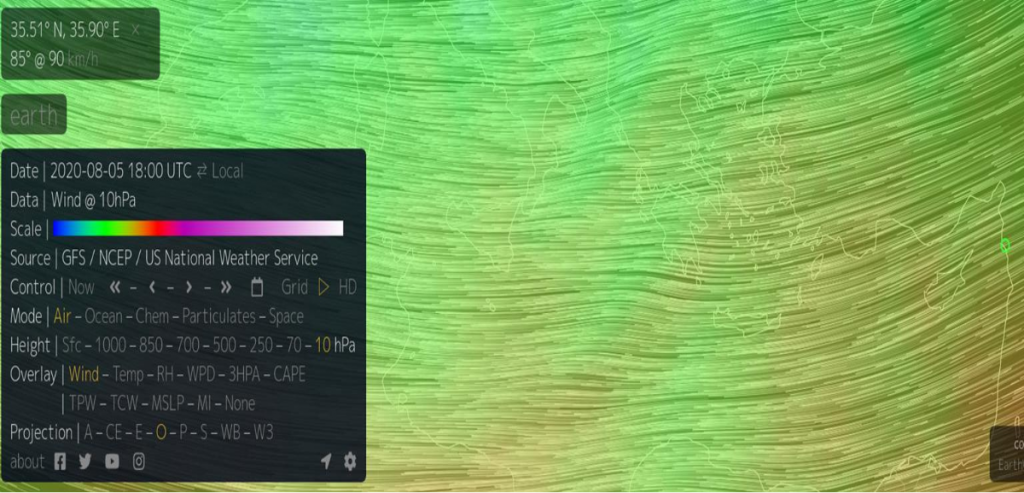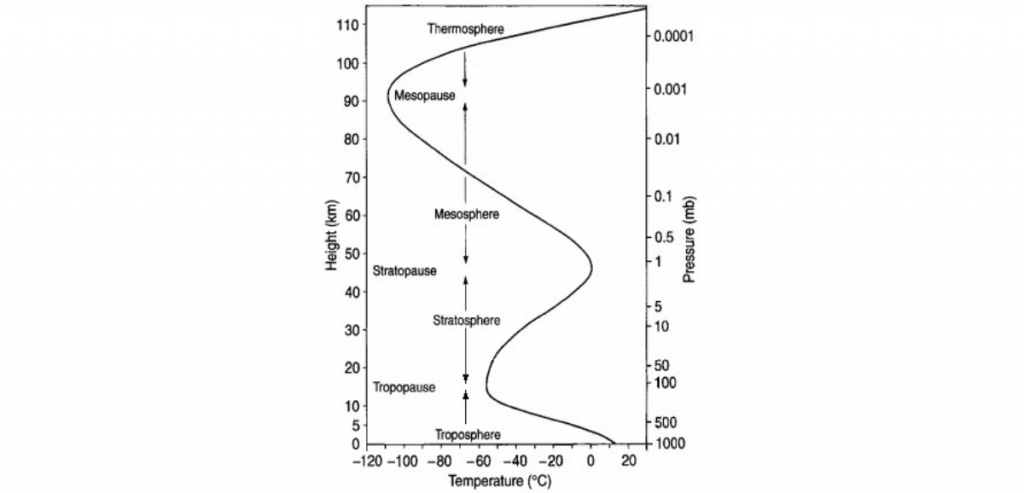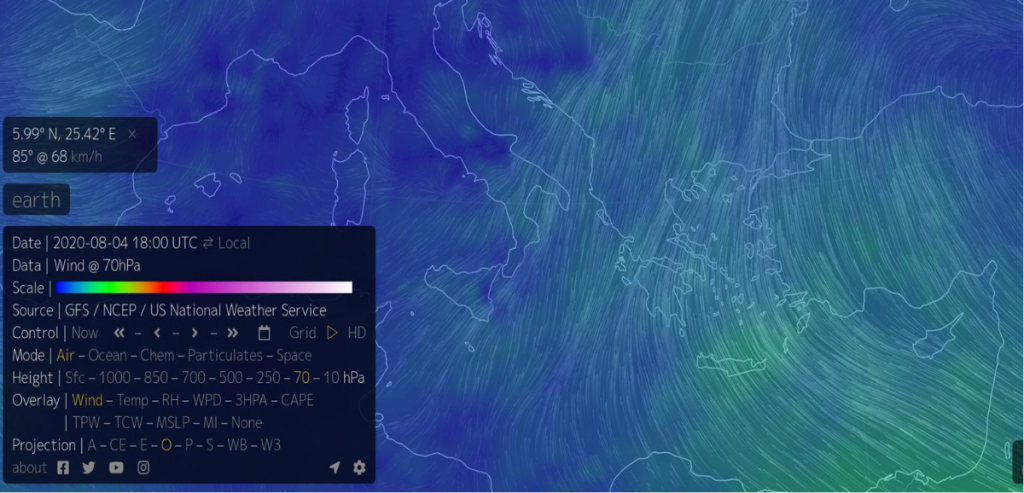ADVANCED TECHNOLOGY 7 RESEARCHERS TEAM
PARAGRAPH X
DEMONSTRATION OF THE DPE’S ABILITY TO NEUTRALISE NUCLEAR RADIATION
We have mentioned the ability of the DPE100 and the DPE Shield to absorb nuclear radiation, and the following provides the evidence, which can be examined and verified.
On August 4, 2020 at 14.48 UTC, two explosions occurred in Beirut, Lebanon. (https://en.wikipedia.org/wiki/2020_Beirut_explosions)
The second explosion, the most devastating, released radiation that was pushed by the winds until it reached Sicily (Italy) and was detected by the Geiger counter of the Pedara detection center https://radmon.org/.
Below we show the winds blown on 04 August 2020 18.00 UTC up to a height of 30km (10 hPa in the photo).

The radioactive fallout was detected at Pedara, a distance of 1889 km from Beirut. Radioactive fallout is a set of radioactive debris from an atomic explosion that falls back to Earth and which is made up of the fission products from atoms of uranium and plutonium: this material is incorporated or deposited on the surface of the dust that forms in the explosion of a nuclear bomb or thermonuclear event.
This dust is produced by vaporization and subsequent recondensation of the solid materials that made up the bomb, from dust already present in the air and dust from the ground if the explosion occurs close enough to the surface for the fireball to touch the ground.
World precipitation
Particles that are too fine to precipitate in the first few hours generally descend in a large area of the world and which can assume various modalities.
Should the bomb be powerful enough to push the “mushroom cloud” into the stratosphere (above about 15 km), this delayed fallout is indeed worldwide and the debris covers a very large area before returning to the ground.
The duration of this return varies widely according to latitude, altitude and the time of year when the debris is injected into the stratosphere, and it can be from a few months to several years.
Roughly speaking, hydrogen bombs can be assumed to be powerful enough to carry the cloud of debris into the stratosphere, while atomic bombs do not. Therefore, while the stratospheric fallout is produced mainly from hydrogen bombs, even atomic bombs reach the troposphere.
(Source: https://www.chimica-online.it/download/ricaduta-radioattiva.htm).
On 04 August 2020 at 15.00 UTC, radiation reached the maximum level of 854 CPM (Count Per Minute) when the maximum safe level is 25 CPM.
The radioactive drift continued until it was detected a further 951 km beyond Pedara, at the Losio station (Alessandria-Piedmont). All of this is supported by the wind map posted above.

So, the debris was projected into the stratosphere, with a maximum level of 10 hPa at a height of 30 km, following the path indicated above, and then continued on to Northern Europe where other detections took place, while those at lower altitudes, with levels up to 70 hPa at an altitude of 18.5 km were pushed by other winds towards Puglia.

The photo of the winds below relates to 04 August 2020 at 18.00 UTC

The direction of these winds should have brought the radioactive debris dust to Serbia, Bosnia, Bulgaria, Romania, Ukraine, Hungary, Poland, Slovakia, etc.
In several of these countries there are other radiation detection stations that did not detect any variation beyond the safe limits of the radioactive level. This is an important index that confirms that the DPE was able to neutralize the radiation before it reached those countries.
We know that the DPE is able to balance the environment up to an altitude of 200 km, but how does this balance happen?
Ionizing radiation is defective solar energy cells which, through a process of interaction of the energy emitted by the DPE from the Earth, correct the defective solar energy cells into healthy cells, namely Plasma.
This excess of plasma is then discharged to the ground through lightning. In fact, the lightning is a column of ionized gas (plasma.
If this was so, we should have had moderate or no lightning activity in the DPE action zone in the days prior to 04 August 2020, then intense lightning during the presence and discharge of radiation, and then again moderate or no lightning activity after neutralization of the radiation.
This photo is from 03 August 2020 at 17.00 UTC and is the recorded lightning activity.

The next photo is of 04 August 2020 at 17.00 UTC and shows the recorded lightning activity. It should be noted that Puglia is free and should have remained so, considering that the storm front was moving towards the East.

The next photo below is of 05 August 2020 at 17.05 UTC and is the recorded lightning activity. The intense lightning activity recorded in the DPE area is clearly visible

We also made a comparison with the weather conditions at that time, shown in the photo below and they do not justify that intensity of lightning activity shown, especially when compared with the front in the rest of Italy

The lightning activity continued the next day, also. (Photo below) Notice how the lightning area coincides exactly with the area covered by the action of the DPE.


After the radiation was discharged, the balance was restored and the lightning activity stopped.

I made some on-site measurements with my Geiger counter and the parameters on 07 August 2020 at 17.00 UTC were normal.
Since the installation of the DPE, we have always been scrupulous in detecting every single anomaly and it was these that revealed the evidence described above.
Since installation of the DPE, we have seen a drastic reduction in the power and number of lightning strikes, as we have verified that the DPE drains excess energy, not allowing a dangerous accumulation.
So, we were used to seeing limited thunderstorm lightning in the distance.
In the days described above, however, many lightning strikes occurred in the area and one even in a clear sky a few kilometers from the DPE.
That didn’t make sense, but later we found out why…
Another important detail can be seen in the photos of the lightning activity recorded on 03 August 2020 at 17.00 UTC and the one on 04 August 2020 at 17.00 UTC. If you look at the photos, the lightning front moves progressively eastwards.
In the photos of the lightning activity of 05 August 2020 at 17.05 UTC and that of 06 August 2020 at 17.05 UTC, the lightning literally “appeared” and then disappeared the next day, without moving on to other areas, which tells us this lightning is not caused by a storm.
We also carried out further investigations to see if other survey stations between Sicily and Puglia had recorded other values but, unfortunately, there are no stations present in that area. On the other hand, the other leeward operating stations beyond Puglia did not register changes beyond the safety limit of the radiation, and as of August 16, the levels remain low in various parts of Northern Europe (Västerbotten, Sverige; Saarland, Germany; Drenthe, Nederland; etc.)
